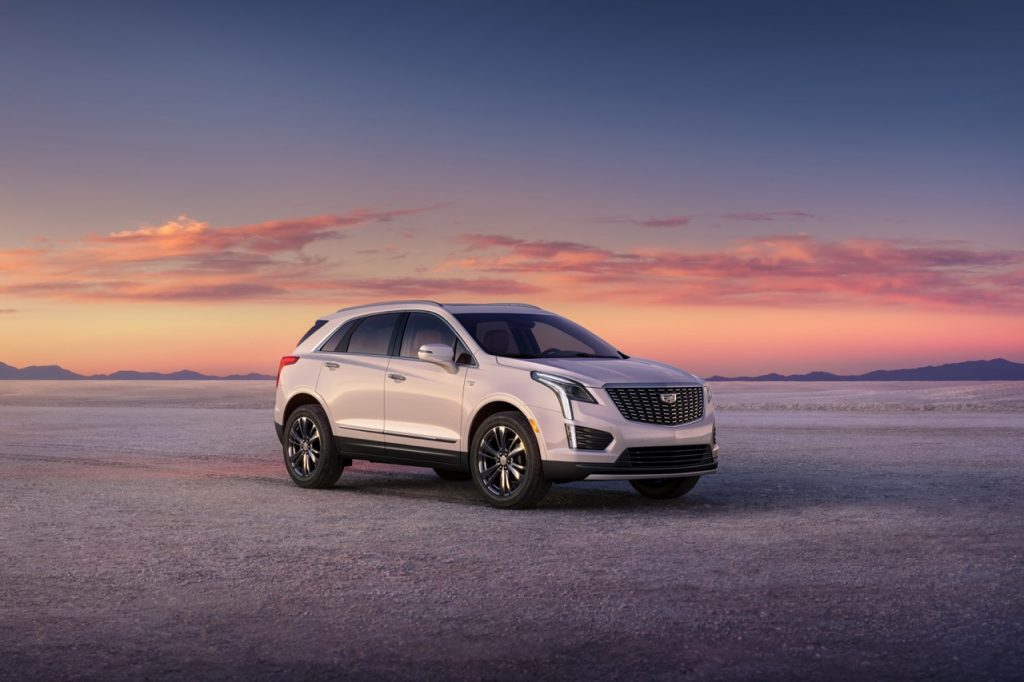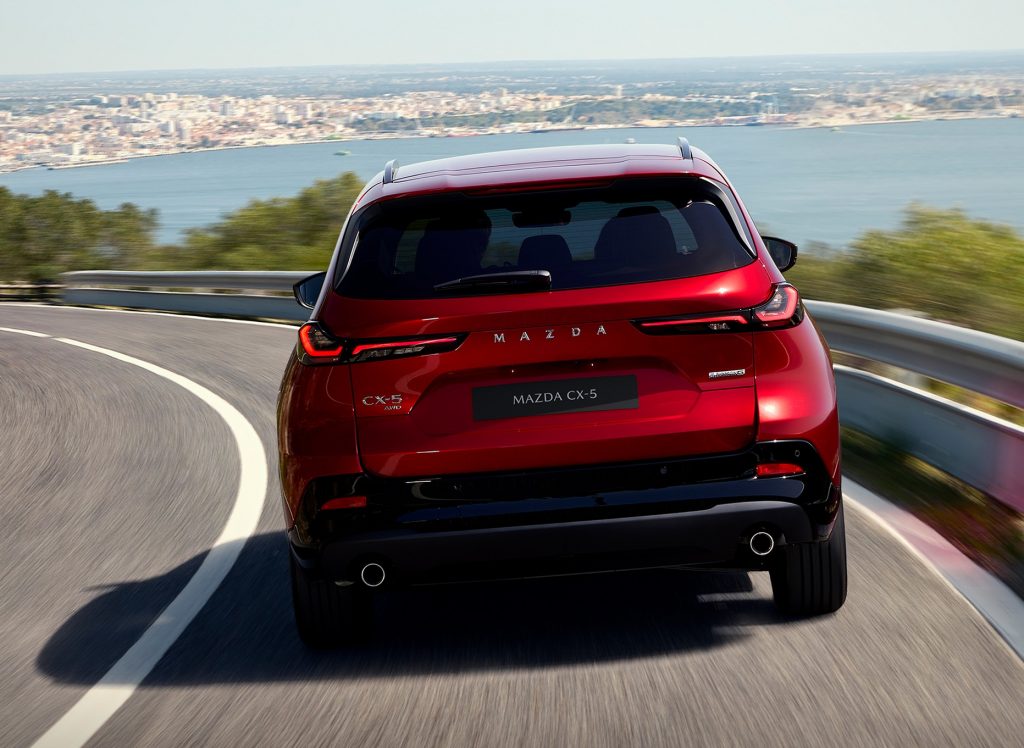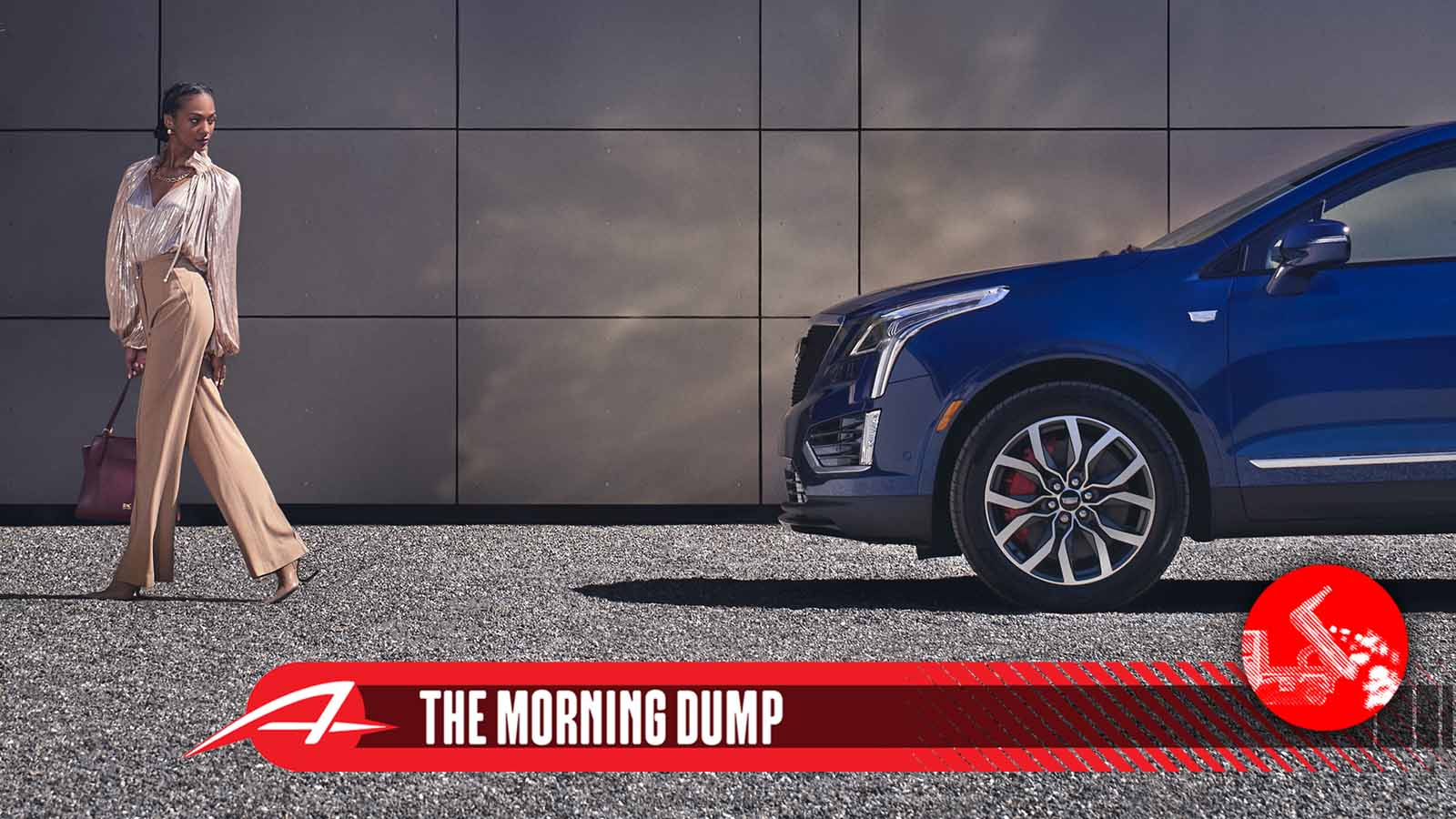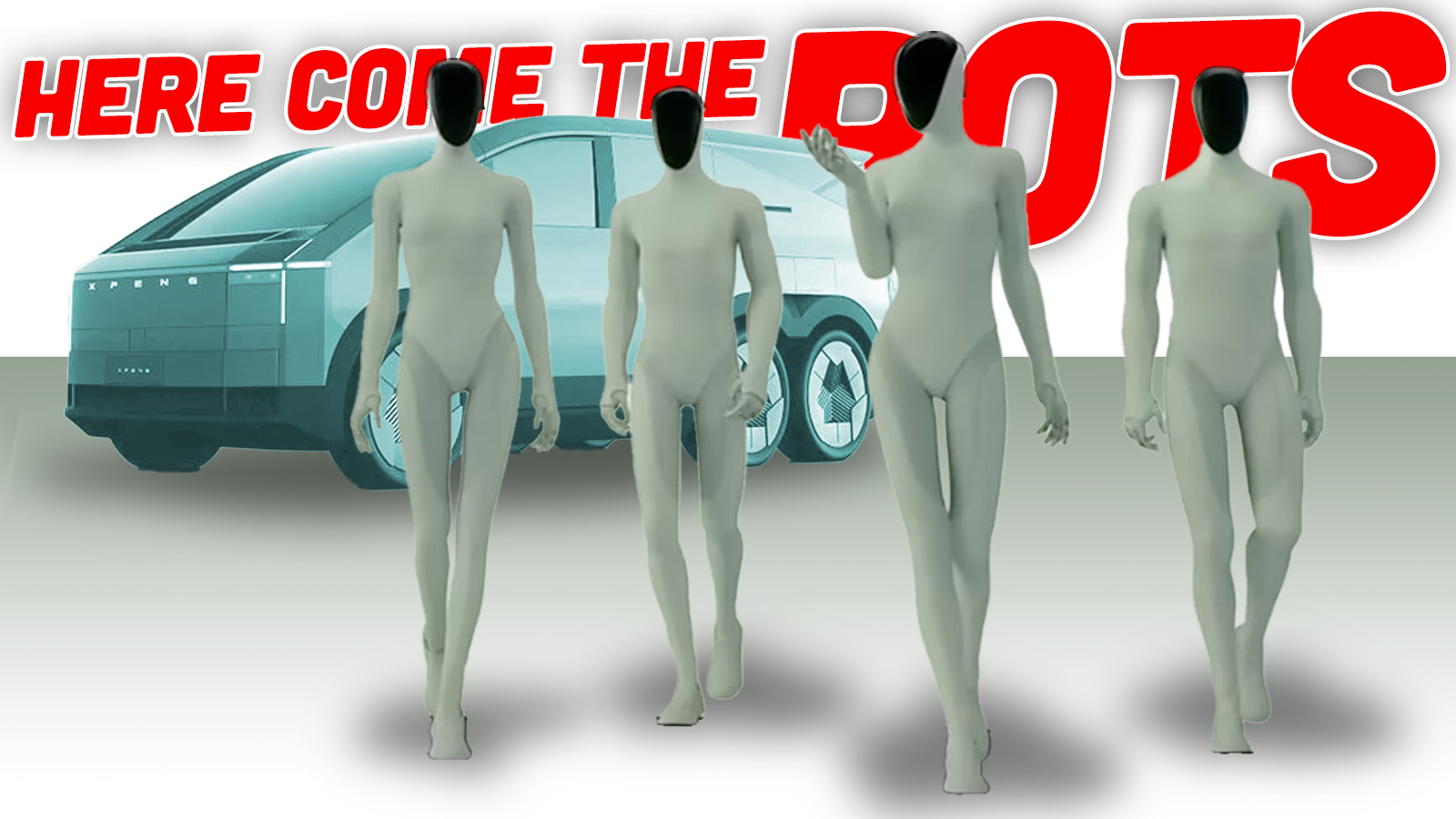As a car enthusiast who also cares about the environment, the only solace I can take in the walking-back of fuel economy regulations is that it might help preserve some of the cars I like (Golf R) or encourage some strange oddities (V8 Pacifica). I think the idea that we’ll suddenly see a plethora of new high-powered ICE cars across the board is a fantasy, though. What I suspect is that the most common outcome will be that automakers decide to lengthen the lives of existing models.
The Morning Dump is both an evidence-based operation and a vibes-based one. The vibes around the current government’s elimination of penalties for Corporate Average Fuel Economy (CAFE) violations have been split between abject horror and utter joy, whereas the current evidence points to an outcome that’s probably not so extreme in any direction.
What about America’s relationship with other countries? Toyota and Honda are both Japanese automakers that are, in many ways, quasi-American companies. This is an enormous achievement if viewed from the perspective of 175 years of American and Japanese relations. If you were to look at, say, the last 17.5 weeks, you might have a different view.
While we’re going to have to wait a bit for Toyota and Honda to report earnings, we’ve already got a report from Mazda, and it’s rough. And, finally, there’s a new CEO at Jaguar Land Rover.
My Father-In-Law Has One Of These, So I Need To Be Careful What I Say

The people who run car companies are, generally, quite smart. Product planning is an enormously complicated job, and you don’t last long if you make a lot of bad decisions. I don’t want to retread yesterday’s TMD too much, so the short version of it is that the budget/tax bill passed by the Republican Congress and signed by President Trump sets the penalty for violating Corporate Average Fuel Economy standards to $0. It’s a sort of backwards way of removing these penalties.
This approach, though, is also reversible, and it would be high on the list of accomplishments for a Democratic trifecta in 4-to-5 years to do just that. You know how long a new car product development cycle is? Anywhere from 4-to-7 years. The math here is quite easy, even if the response to it isn’t. The idea that a large automaker will suddenly abandon all its EVs and put V12s in everything is nonsensical. While some automakers may lean into it more than others (cough Stellantis), planning all-new products that might harm your future fuel economy/greenhouse gas standing is probably not smart. Plus, these are often global platforms, and fuel economy standards exist everywhere else.
Do I need to hit the “consumers want hybrid versions of everything” button again? The government should, in my view, have a role in encouraging greener cars for everyone because it’s good for everyone. We’re lucky that the push for higher fuel standards in the past has pushed automakers to develop technologies like hybrids and EVs, which the market is now demanding, to varying degrees.
So what will actually happen? The safest bet for automakers in this new tariff/environmental regulatory regime is merely to keep making the gas-powered cars you already make in the United States as a hedge against whatever is going to happen. Do you want proof? Here’s some proof, via the Detroit Free Press:
General Motors plans to produce the Cadillac XT5 past 2026, according to a UAW memo sent to workers at the automaker’s Spring Hill, Tennessee, plant.
The change extends the life of the vehicle beyond what the Detroit automaker told employees this spring, that production of the five-seat SUV, initially slated to end in August 2025, would “continue into 2026” without confirming a timeline.
“Today, we’re excited to share that the XT5 legacy will continue as a next-generation gas vehicle beyond 2026, proudly built at Spring Hill Manufacturing,” said the memo sent Aug. 1 from UAW Local 1853 to manufacturing staff. “A refreshed XT5 will launch in 2027.”
I have driven a Cadillac XT5 at some point, but I woke up this morning concerned that any attempt I make to impugn the vehicle will be countered by the fact that there is a newer, better version of the crossover on the market. There is, but it’s only available in China (as a mild-hybrid!). I’m a professional automotive journalist (don’t @ me), and even I had to pause and question if the XT5 was still for sale, and then I realized it was the XT4 that was recently cancelled.
These are fine cars, and I’m not just saying that because my father-in-law has one and is coming to visit later this week. They’re not great cars. They’re not bad cars. They’re fine. (Car and Driver says: “…the aging Cadillac XT5 is outclassed by newer and more capable alternatives,” and Motor Trend ranks the XT5 #15 among luxury compact SUVs!). You wouldn’t be sad to rent one and, given a good enough deal, it’s a reasonable lease. They’re just forgettable because Cadillac currently makes a lot of fantastic, much better electric crossovers in the form of the Optiq and Lyriq. There’s also the Escalade and Vistiq. If you want a sedan, the CT4 and CT5 are both stellar.
What I’m trying to say is that the Cadillac XT5 is the Carl Herrera of crossovers; an average-at-best player on a championship team (if you want an updated reference, the Sasha Vujacic of crossovers). It also has three things going for it:
- It’s gas-powered.
- It’s made in America.
- The development costs have long since been recovered.
The XT5 got an extra mild refresh in 2020, but has basically been the same vehicle underneath since it went on sale almost ten years ago. It was expected to disappear this year, with production ending around now (the press site doesn’t even allow you to download images of the new car on the front page), but it’s been given an additional life. Here’s what Cadillac said about it:
“As Cadillac evolves, we will continue to make necessary adjustments to our portfolio to meet customer demand,” said the memo from spokesman Kevin Kelly. “The current-generation Cadillac XT5, an important part of our global portfolio, will remain in production until the end of 2026. The XT5 will continue to live-on as a next-generation gas powered vehicle beyond that timeframe.”
We might get something fun like a Subaru Outback Crosstrek with the WRX motor because of the CAFE rollback, but the more likely result of all this is just that we get some average cars that last a lot longer than originally planned because that’s the most logical and efficient path.
Toyota And Honda Likely Took A Huge Tariff Hit

Historically speaking, any trade between the United States and Japan is the responsibility of the former. Japan of the 19th century was kinda irked that European missionaries kept trying to convert everyone to Catholicism, or, worse, to hoodwink locals with terrible trade terms, and so it tried to isolate itself from the world. An expanding, Manifest Destiny-pilled America suddenly had California and was eyeing trade with Asia. The country’s new fleet of ships needed coal and a place to resupply, and Japan was that place.
Here’s how the State Department’s historian puts the little moment in history when U.S. Admiral Commodore Perry forcibly opened up relations between the two countries:
Perry first sailed to the Ryukyus and the Bonin Islands southwest and southeast of the main Japanese islands, claiming territory for the United States, and demanding that the people in both places assist him. He then sailed north to Edo (Tokyo) Bay, carrying a letter from the U.S. President addressed to the Emperor of Japan. By addressing the letter to the Emperor, the United States demonstrated its lack of knowledge about the Japanese government and society. At that time, the Japanese emperor was little more than a figurehead, and the true leadership of Japan was in the hands of the Tokugawa Shogunate.
Perry arrived in Japanese waters with a small squadron of U.S. Navy ships, because he and others believed the only way to convince the Japanese to accept western trade was to display a willingness to use its advanced firepower. At the same time, Perry brought along a variety of gifts for the Japanese Emperor, including a working model of a steam locomotive, a telescope, a telegraph, and a variety of wines and liquors from the West, all intended to impress upon the Japanese the superiority of Western culture. His mission was to complete an agreement with the Japanese Government for the protection of shipwrecked or stranded Americans and to open one or more ports for supplies and refueling. Displaying his audacity and readiness to use force, Perry’s approach into the forbidden waters around Tokyo convinced the Japanese authorities to accept the letter.
The following spring, Perry returned with an even larger squadron to receive Japan’s answer. The Japanese grudgingly agreed to Perry’s demands, and the two sides signed the Treaty of Kanagawa on March 31, 1854.
This worked out quite well for Japan, in a way, as it got a lot of modern equipment it used to expand its military. It wasn’t so great for the rest of the world there in the middle of the 20th century, but that was resolved, and Japan realized it was far better off conquering the globe with Walkmans, Corollas, and Sailor Moon. There’s just way more margin in tech goods and anime than there is in naval battles.
Japan has, somewhat begrudgingly, accepted new trade terms with the United States. Rather than sending a bunch of warships, President Trump sent messages on Truth Social about bowling balls (I’ll let you decide which is worse). The damage, though, has already been done, as Reuters reports:
Toyota Motor and Honda Motor are expected to report weaker first-quarter earnings this week, as U.S. import tariffs and a stronger yen weigh on profits despite solid demand for hybrids in their biggest overseas markets.
Japanese automakers face growing uncertainty in the U.S., where tariffs on imports are pushing up vehicle prices and testing the resilience of consumer demand. Investors will be watching for clues on how Japan’s two largest automakers are offsetting such burdens.
Toyota, the world’s top-selling automaker, is forecast to post a 31% year-on-year drop in operating profit to 902 billion ($6.14 billion) yen on Thursday, according to the average estimate of seven analysts polled by LSEG. That would mark its weakest quarterly result in more than two years.
Honda is expected to report a 36% decline in operating profit to 311.7 billion yen on Wednesday, its second straight quarterly drop. The automaker has already forecast a 59% fall in full-year profit.
These are just estimates, of course. If only there were an automaker that reported earnings earlier today in Japan…
Mazda Lost $286 Million Last Quarter

Of all the Japanese automakers most at risk from tariffs, Mazda’s small footprint in the United States (it only makes the CX-50 here) potentially puts it in the worst position relative to its overall success. Mitsubishi no longer makes cars in the United States, but Mitsubishi also doesn’t need the market in the same way Mazda does.
As Nikkei Asia reported this morning, the initial tariff impact is not great for the automaker, which lost $286 million in its most recent quarter:
Mazda expects that the effect of tariffs will come to 233.3 billion yen for its full financial year ending March 2026. But the company emphasized that it can offset more than 60% of that total by further reducing costs and strengthening local production.
“North America is the most important market for us,” Moro said. “The agreement between Japan and the U.S. to set the import tariff rate on automobiles at 15% has big significance.
“We believe that this will serve as a catalyst for maintaining and strengthening the value of manufacturing in Japan and its supply chain,” he added.
But he also said, “The tariff increased 15% from the previous 2.5%, placing a heavy short-term burden on corporate management,” referring to the rate before Trump started raising it. “We will not let up in continuing to thoroughly accelerate revenue structure reforms.”
While Mazda can do better thanks to whatever the Japan trade deal is, it also needs trade with Mexico to be resolved in a way that keeps its import costs lower.
Tata Puts One Of Its Own In Charge Of JLR

Jaguar and Land Rover are brands with a lot of potential globally. Land Rover is a hit basically everywhere. Jaguar has had its own issues recently, but the marque probably needed to change to survive. JLR has long been owned by Indian megaconglomerate Tata, and now Tata is making sure it has one of its own at the helm of the automaker, with the appointment of Tata CFO PB Balaji.
Here are some comments from Jaguar’s Chairman, the outgoing CEO, and the new guy:
Mr Chandrasekaran, Chairman Jaguar Land Rover PLC, Tata Motors and Tata Sons said: “I would like to thank Adrian for the stellar turnaround of JLR and for delivering record results. I am delighted to appoint Balaji as the incoming CEO of the company. The search for a suitable candidate to lead JLR has been undertaken by the Board for the past few months and after careful consideration it was decided to appoint Balaji. He has been associated with the Company for the past many years and is familiar with the Company, its strategy and has been working with the JLR leadership team. This move will ensure that we continue to accelerate our journey to Reimagine JLR.”
Mr Mardell said: “These three years have been a great privilege. Together with the incredible JLR workforce, we have cemented JLR’s position in the automotive industry during a time of incredible change. I would like to thank everyone in JLR and the extended Tata Group, and wish Balaji every success in his new role”
Mr Balaji said: “It is my privilege to lead this incredible company. Over the past 8 years I have grown to know and love this company and its redoubtable global brands. I look forward to working with the team to take it to even greater heights. I thank Adrian for his immense contributions and wish him well for his next innings.”
This seems like a warm and peaceful transition. Certainly, the President of the United States will have nothing to say about it…
Trump posted on his Truth Social platform that the auto company, owned by India’s Tata Motors, was “in absolute turmoil” and claimed that the “CEO resigned in disgrace”.
His post on Monday evening also described JLR’s recent much-criticised advert – which showed a diverse group of models in brightly coloured clothing set against a vibrant backdrop and was designed to launch the company’s rebrand – as a “stupid, and seriously WOKE advertisement”.
Trump asked: “Who wants to buy a Jaguar after looking at that disgraceful ad?”
Happy first day on the job!
What I’m Listening To While Writing TMD
I’ve long wondered what the Song of the Summer would be, especially after last year, when there were approximately 90 good options. Nothing has really hit for me until my wife pointed out there was, in fact, a song of summer. A song so beloved and so ubiquitous that you may have the chorus tattooed on your tympanic cavity. That song is “Hold My Hand” by Jess Glynne. It came out 10 years ago, and wouldn’t even be on my radar were it not for the viral success of the “Jet2 Holiday” theme, which uses the song in the background. Your recognition of this chorus is entirely based on how online you are. I am very online, so nothing beats “Hold My Hand” for song of summer. Now 50 pounds off!
The Big Question
What’s the most mediocre car in every automaker’s lineup?
Top photo: Cadillac








Good job Cadillac, 15th place out of… (1 BMW, 2 MB, 3 AUdi, 4 Volvo, 5 Lincoln, Alfa Romeo 6thish, Lexus, Acura) 9 possible.
XT5? What the hell is that? Never heard of it. That’s great, since it sounds so boring…zzz…
I can’t even picture an XT5. XT4 yes. XT6 yes. 5? I keep going to basically one of the others.
Should have seen this coming, the Blazer and XT5 share the platform and the Blazer gets a 2nd generation in 2027 so the XT5 probably will too.
very frustrated with GM because when they put effort into it their hybrid powertrains are fantastic. but they gave up on hybrids RIGHT before the American consumer finally fell in love with them. Also GM should have tried a equinox hybrid.
suposedly 6 hyrbid gm models will launch for the 2027 model year i guess i’ll keep my ears to the ground.
Just to highlight something. The yen is strengthening because it is the current administration’s policy to weaken the dollar to make it more expensive for is to buy things from other countries and cheaper for them to buy US goods.
(Maybe also to make it more expensive for people to flee the USA / S)
Thank you for reminding me of Commodore Perry, as I had forgotten that the US had reached beyond the Western Hemisphere to impose its will so early in its history (apart from the establishment of Liberia, of course.) We’re just as great as we’ve always been.